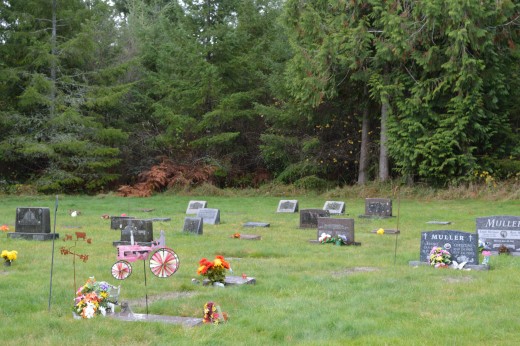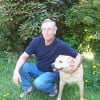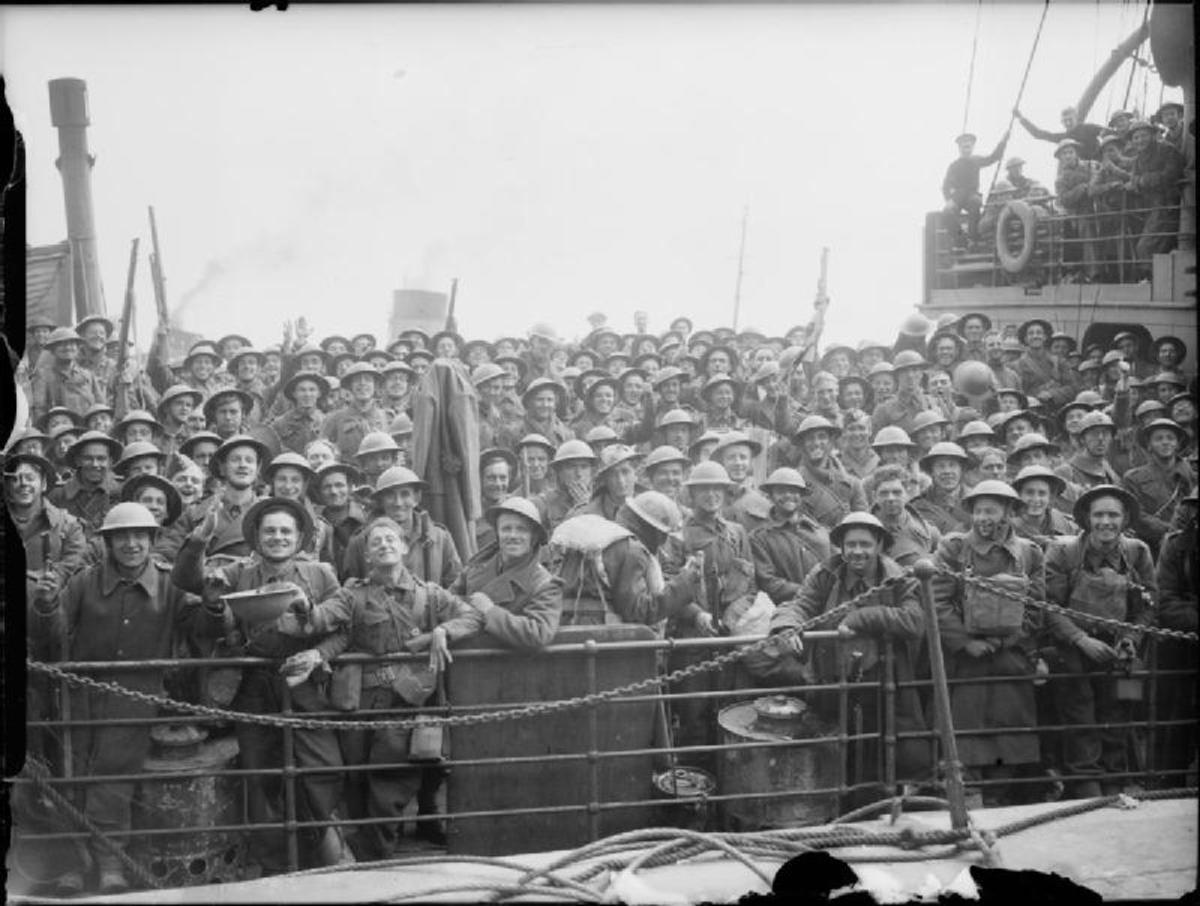- HubPages»
- Books, Literature, and Writing»
- Commercial & Creative Writing»
- Creative Writing
Mary Had A Little Lamb: Chapter Two
Some Thoughts
Well, if you survived Chapter One, and you chose to return for Chapter Two, then you really must like the dark side . . . so I welcome you.
As I mentioned last week, this story is inspired by the nursery rhyme, but it is also inspired by real life. Just last week two teenage girls were out walking along the railroad tracks and were murdered. Here one moment, gone the next, and that’s the exact distance between our normal lives and a life of horror . . . a moment!
So, with that cheery thought as your guide, I give you Bill and Dawn, police detectives, homicide, in search of the killer of young children in Olympia, Washington.

Chapter One
- Mary Had A Little Lamb: A Writing Exercise
A short story, not for the squeamish. Hopefully you'll enjoy it.
NOTORIETY
The newspapers dubbed him “Houdini” because of his penchant for appearing, and disappearing, without a trace. The Olympian, our daily rag, saw their sales increase tenfold as citizens devoured every word printed about our latest Northwest serial killer:
Police continue to search for the killer known as “Houdini,” who claimed his latest victim one week ago today. His total is now three, according to sources, and those same sources tell The Olympian that police are, at this point, very short on clues and suspects. Mayor Bloomfield advised citizens to pay special attention to the whereabouts of their children, and to report suspicious behavior immediately.
I tossed the paper in the trash and turned to Dawn, who was pouring over transcripts of hotline phone calls.
“Anything of interest in those calls, partner?”
She looked at me and shook her head.
“Same old paranoid, delusional tripe we always see when a hotline is established. People are afraid, Bill, and that means seeing shadows where none exist. It’s only going to get worse until we catch this puke.”
She was right on about that. What she didn’t say . . . what she didn’t need to say . . . was that the city was going to go into full panic mode if another child was killed. Olympia, despite being the capital of the state, is a small town. If three small kids get killed in New York sure, there’s some concern, but not the type of full-fledged-white-knuckle-shit-your-pants chaos that Olympia was on the brink of experiencing.
“We’re not doing any good here, Dawn. Let’s go back down to the last scene and try to figure out how he dumped her without a trace.”
Houdini for Sure
His nickname was well-deserved. One week earlier Mary Burnett, by all accounts a radiant four-year old when alive, had been killed, her body dumped on muddy, tidal flats, twenty feet from solid ground. The killer had managed to somehow drop off the body without leaving a footprint or any other tangible indication of how he did it.
Ten minutes after checking out of the office, Dawn and I stood on the sidewalk looking out at those tidal flats. Inspiration was not our companion.
“I still don’t get it, Bill. You take one step on that shit and you’ll sink down a good foot, maybe more. So he does what, drops her gently from the sky using a drone? It’s humanly impossible to pull off this trick.”
“And yet he did it,” I told her, looking around at the surrounding area. The sidewalk we stood on was only elevated about five feet above the tidal flats. The road, like most of Olympia, was little-traveled in the wee hours before dawn. The nearest street lamp was a good fifty feet north of where we were standing. Four lanes of asphalt, another sidewalk, and then a slight hill separated the murder scene from the nearest homes. I estimated that distance at one-hundred yards, maybe slightly less. It was a good site to drop a body but still, it took a certain amount of balls to pull it off.
“What about the tides?” I asked her. “What kind of water are we looking at with high tide?”
“A maximum of two feet,” was her tired answer. “Even a flat-bottomed skiff would be scraping mud with two people in it.”
Dawn hugged herself and looked at me.
“This isn’t going to be a slam-dunk, is it? Let’s go talk to Mary’s parents again.”

Into the Bosom of Sadness
The home where Mary Burnett had lived her four years of life was a faux-farmhouse on two acres of land out on Libby Road. In the bright sunlight it looked peaceful and inviting, two old cedars providing ample shade, chickens scratching the ground, a wraparound porch with lawn chairs overlooking a small duck pond. The house itself stood fifty yards off the road, a single driveway leading to it, no other access to the actual house. Mary had been tucked in bed at eight the night she went missing, tucked away in an upstairs bedroom, no other access to that bedroom other than a window which was locked the night of her disappearance. Mom had checked on her daughter at ten, found her missing, and called it in immediately. Somehow, in that two hour window, the killer had entered the home, gone upstairs, grabbed Mary, taken her outside, and driven off with her, all while mom and dad watched television downstairs in the living room.
There was a new Ford F-150 in the driveway next to a Mercedes C-Class. Mister Burnett, a corporate lawyer, came outside to greet us as Dawn shut down our car. We got out and shook hands with him. I let Dawn do the talking. My plan was to observe and categorize, silently toss around theories and scenarios while Dawn asked questions.
Mister Burnett was beaten down, plain and simple, as though the life force had been sucked out of him with Mary’s disappearance. His hair was unwashed, his clothes rumpled, and at ten in the morning I could smell beer coming from him as he talked.
“Anything new, detectives?” he asked.
“No, Mister Burnett, we’re sorry, these things take time,” Dawn told him. “We’re sorry to invade your space once again, but we wanted to walk through the house one more time. Maybe we’ll see something this time we missed before. Would that be all right, Mister Burnett?”
Grief Becomes a Physical Presence
The man of the house led us into the kitchen where his wife sat at the table, a cup of coffee before her, a bottle of vodka next to her cup. She barely resembled the woman we had met seven days earlier. Angie Burnett had once been a model for T. J. Maxx and The Gap. She had once been a respected dentist. She had once been quite active in the Arts in Olympia, serving on several advisory boards.
All of that was gone. Only a shell remained.
Her gaze was vacant as she looked at us.
“Mrs. Burnett,” Dawn said. “We’ll be as quick as possible. We are so sorry to disturb you again.”
“Do either of you have children, detectives?” she asked us. We both shook our heads. “Good, then. Don’t do it. The cost is too much. Mary was our only child. We had planned on having three but, well, I don’t think so now.”
She looked out the kitchen window. I’m not sure she even knew we were there.
“What did I do wrong? How did I allow this to happen? My baby counted on me and now she’s dead, and nothing can bring her back, no one can make it all go away, here one moment, gone the next, poof, the blink of an eye, Mary, Mary, quite contrary, pretty maids all in a row and that lamb, always the lamb, following along, stinky animals, sheep, why would any little girl want to be around such a smelly animal? Do you know?” she asked Dawn, then turned to me. “Do you know?”

Absolutely Nothing
An hour later we were once again in our department issue Ford Explorer, staring at the farm house.
“We have ugly jobs,” Dawn said. “No wonder cops eat their guns. Mrs. Burnett may not make it back, you know?”
“Don’t take this the wrong way, hon, but at this moment I can’t worry about Angie Burnett. We have to stop this bastard but first, we have to figure out how the hell he did this. To get upstairs he had to have walked right by the living room to the stairs, then carry a child down those stairs and right by the living room again, all the while two loving and protective parents were in that living room watching television. He then takes the child somewhere else, strangles her, abuses her post mortem, and leaves her body in an impossible-to-reach location downtown.
“How can a human being do what he’s done so far?”
I’m convinced . . . no, I hold out hope . . . that there is a special kind of hell for child-killers, some place where Cerberus feeds constantly on the screaming carcasses of the guilty.
2017 William D. Holland (aka billybuc)









